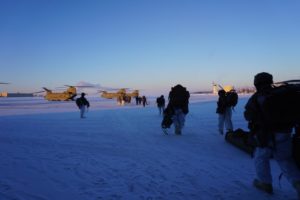
Having a reliable broadband communications capability for Arctic operations is the top unfunded priority of U.S. Northern Command (USNORTHCOM), the command’s chief said on Tuesday during before a Senate panel examining U.S. readiness in the Arctic. “One of the things we find, very simple things become hard,” Air Force Gen. Terrence O’Shaughnessy, commander of USNORTHCOM, told the Senate Armed Services Subcommittee on Readiness and Management. “And one of those is communication when you’re in the Arctic.” USNORTCHOM’s unfunded priorities list…

 By
By 











